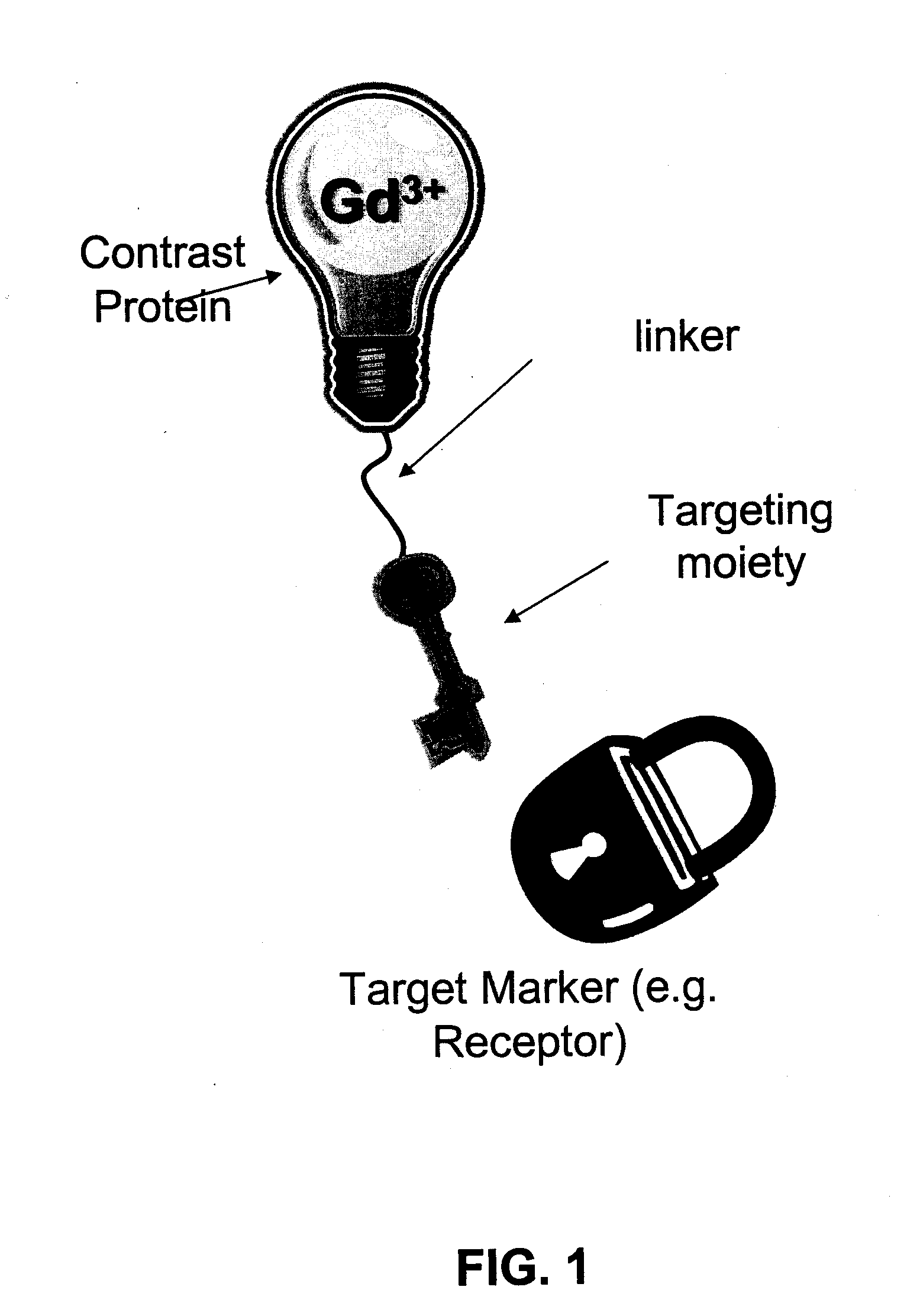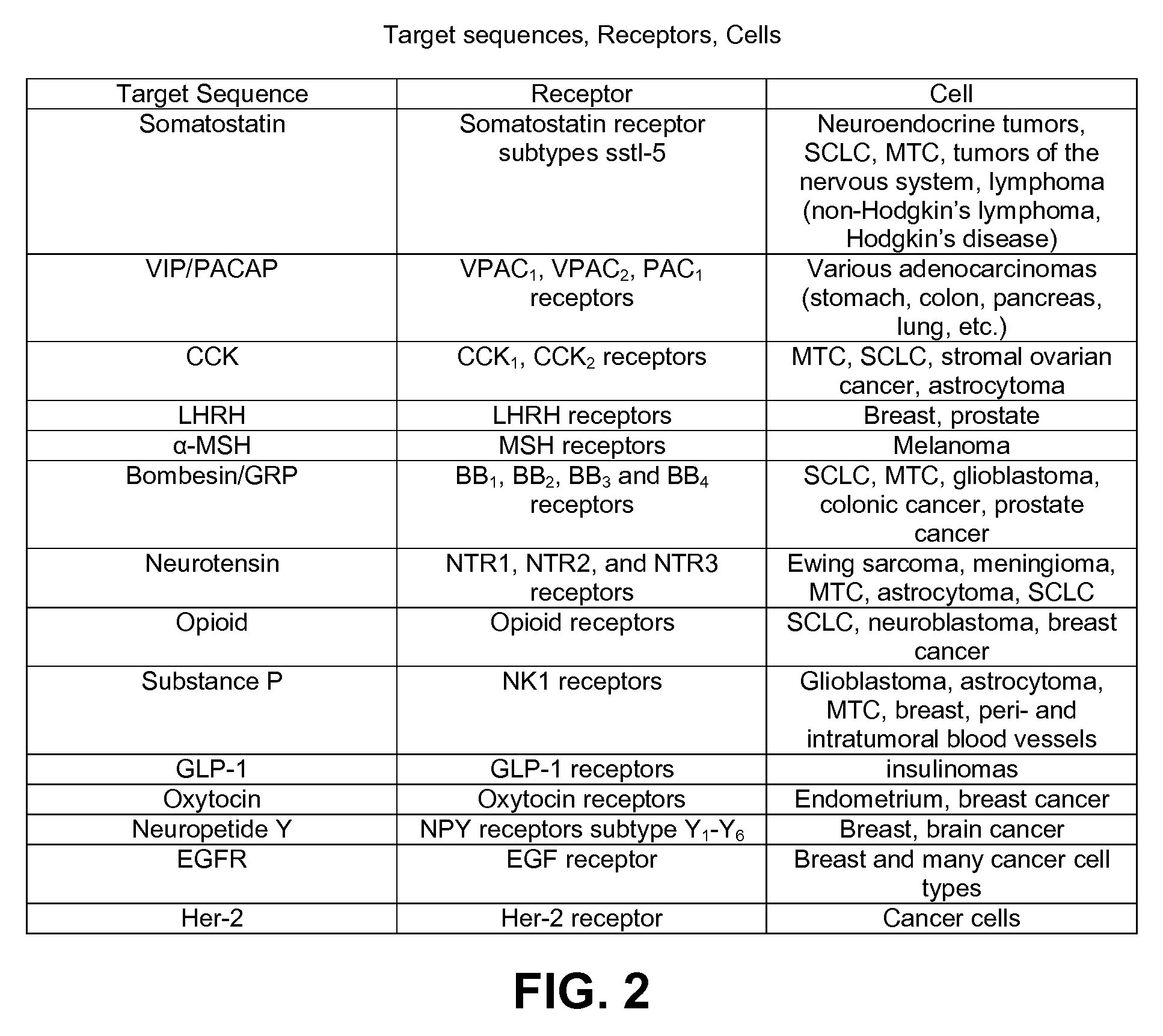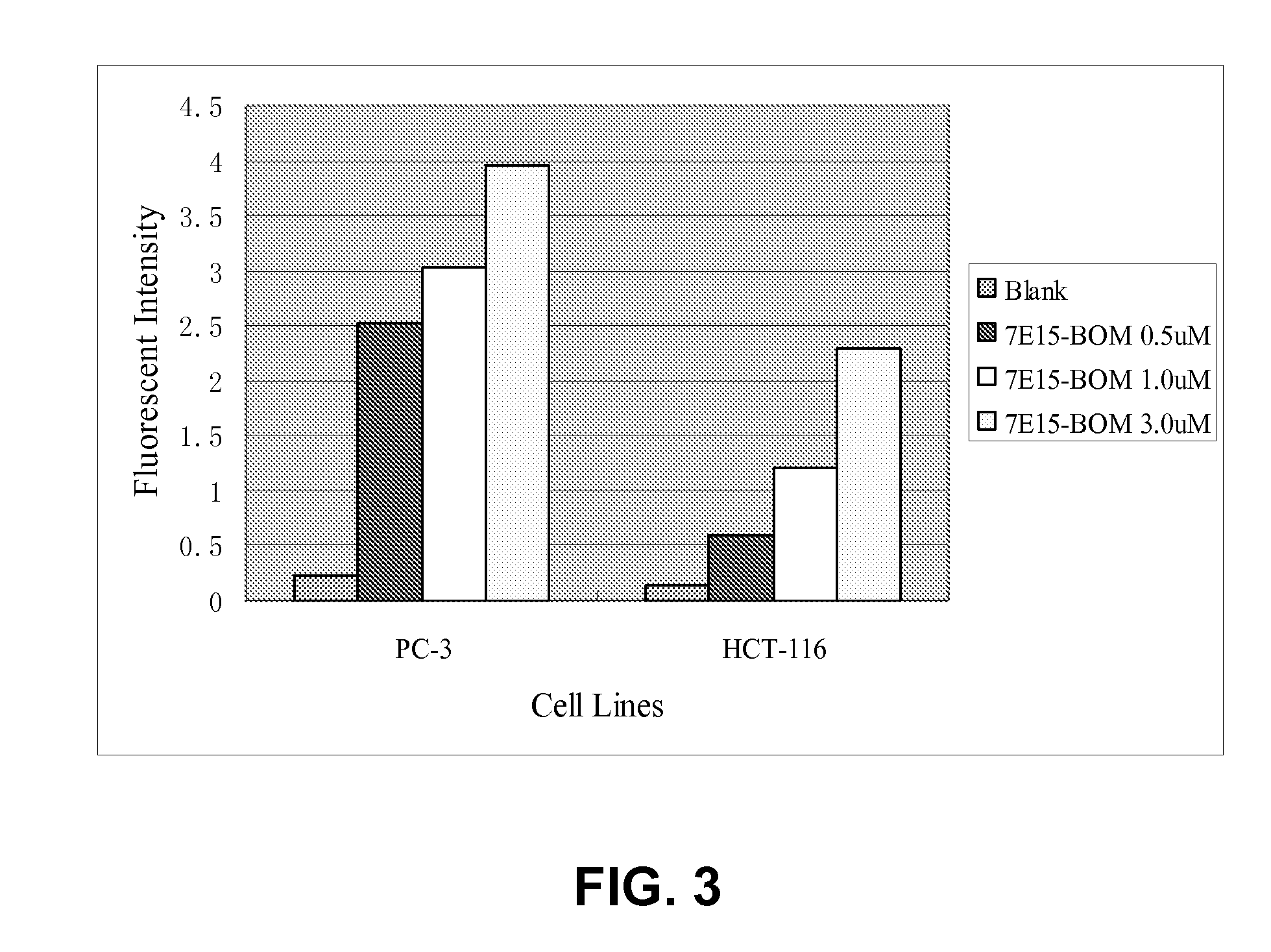Targeted contrast agents and methods for targeting contrast agents
a contrast agent and target technology, applied in the field of targeted contrast agents, can solve the problems of limiting the time window for data collection, short circulation time, and difficulty in detecting early tumor lesions and metastases, and achieves the effect of facilitating the delivery of contrast agents, and reducing the exposure of contrast agents
- Summary
- Abstract
- Description
- Claims
- Application Information
AI Technical Summary
Benefits of technology
Problems solved by technology
Method used
Image
Examples
example 1
[0139]This example demonstrates that a contrast agent with gastrin receptor peptide (GRP) receptors binds cancer cells. An ELISA assay in three cell lines has shown that an exemplary contrast agent CD2.CA1.CD2-Bom (see below) with a targeting moiety of gastrin receptor peptide (GNQWAVGHLM) can be targeted to cancer cells expressing gastrin receptor peptide receptors (GRPRs). Specifically, an ELISA assay was performed on three cell lines, namely, PC-3 cell lines, SW620 cell lines, and HCT116 cell lines. Although both PC-3 cell lines and SW620 cell lines express GRPRs cells, SW620 cell lines express less GRPRs than PC-3 cell lines. HCT116 cell lines express very little GRPRs and were the control group.
[0140]The assay was conducted using cell binding analyses in that the N-terminal of the GST-fused protein was detected using an antibody against GST. The cells were cultured in wells overnight. The GST-fusion protein then was added to the culture medium. The cells were further incubated ...
example 2
[0142]This example shows that a contrast agent linked with GRP undergoes receptor mediated endocytosis. The GRPR mediated internalization of contrast protein GST-CA1.CD2-Bom was observed. The internalization of the contrast agent greatly increases the local Gd3+ concentration. After between 45 minutes and an hour, most GST-CA1.CD2-Bom were internalized through the receptor-mediated endocytosis. The internalized GST-CA1.CD2-Bom appears to accumulate on the cytosolic side-attached to the membrane. However, it has been observed that endocytosis of GST-CA1.CD2-Bom did not occur to a significant level after 30 minutes.
[0143]As shown in FIG. 4A-4F, the contrast agent with GRP undergoes receptor mediated endocytosis. The binding of designed GST-CA1.CD2-Bom to the three cell lines was examined by immunostaining using antibody against GST. The staining was visualized by Zeiss 510 laser scanning confocal microscopy. No significant binding was observed with HCT116 cells (data not shown). Consi...
example 3
[0145]This example shows that the contrast agents with the targeting moiety showed no significant cytotoxicity. The cytotoxicity of designed contrast agents was examined with cell lines SW620, SW480 and HEK293 by MTT assay by an experimental procedure known in the art. Briefly, the testing cells were incubated with designed contrast agents with and without Gd3+ (with concentration up to 50 μM) for 48 hours. The cell culture medium then was removed from the incubation. The cell viability was then analyzed by MTT assay. A slight decrease in viability was observed in HEK293 cells that were treated with w.t. CD2 and CA1.CD2 protein. No significant toxicity was observed in all tested cells treated with designed contrast agents with concentrations up to 50 μM (see FIG. 5).
[0146]The published literature suggests that GRP peptide sequences have strong affinity for the receptor with Kd−10. It is known that GRP undergoes rapid internalization after binding to its receptor GRPR. As discussed a...
PUM
| Property | Measurement | Unit |
|---|---|---|
| dissociation constant Kd | aaaaa | aaaaa |
| atomic numbers | aaaaa | aaaaa |
| atomic numbers | aaaaa | aaaaa |
Abstract
Description
Claims
Application Information
 Login to View More
Login to View More - R&D
- Intellectual Property
- Life Sciences
- Materials
- Tech Scout
- Unparalleled Data Quality
- Higher Quality Content
- 60% Fewer Hallucinations
Browse by: Latest US Patents, China's latest patents, Technical Efficacy Thesaurus, Application Domain, Technology Topic, Popular Technical Reports.
© 2025 PatSnap. All rights reserved.Legal|Privacy policy|Modern Slavery Act Transparency Statement|Sitemap|About US| Contact US: help@patsnap.com



